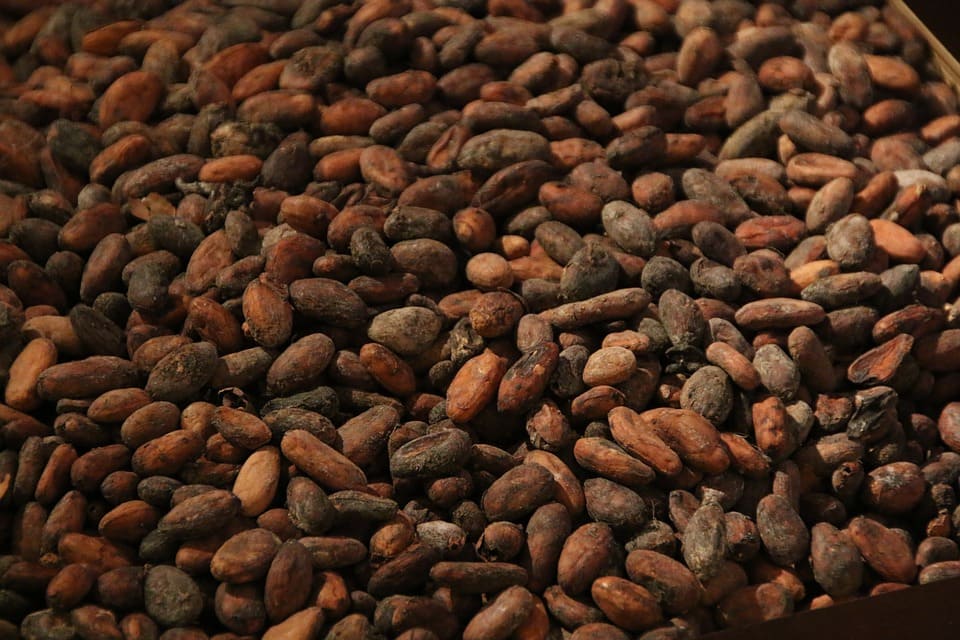In this article, we will tell you how cocoa shell is ground. Cocoa shell is the husk of cocoa beans formed in the process of crude chocolate production.
World market of cocoa beans
The main suppliers of cocoa beans to the world market are African countries. If we take the average annual consumption of this product equaling 3 million tons per year, then 2.1 million will be attributed to African countries. The leading suppliers include Côte d’Ivoire, Ghana, and Cameroon. Furthermore, plenty of cocoa beans are exported by Ecuador and Indonesia.
Cocoa beans are an interesting product, because they contain both cocoa butter and the solids used to make cocoa powder. Cocoa powder is used to prepare drinks, including hot chocolate.
Special aspects of cocoa beans recycling
Like many other recycling activities, cocoa beans recycling leads to waste generation. The main type of waste is shell which is separated from the pod and cannot be first used either in cocoa powder production or in chocolate preparation. This shell is called “cocoa shell”. When recycling the cocoa beans, tens and hundreds of thousands of tons of such waste are generated. The main problem that impedes the use of cocoa shell as a beneficial product is hardness. At the same time, the shell remains a source of beneficial and nutritious substances, but extracting them requires pulverizing the cocoa shell. And that’s where new opportunities come from! Ground cocoa shell can be used for:
- substitute of cocoa powder due to a similar chemical composition;
- additive to mixed fodders for animals;
- protection of top soil and improvement of its properties;
- production of heat from burning;
- production of medications used to stimulate the heart function and the central nervous system;
- production of alcohol, furfurol.
Cocoa shell grinding — the main methods
Cocoa shell grinding is carried out using classical and innovative methods. Classical methods are based on the use of impact, compression, and shear when grinding the hard materials including the cocoa shell. Before grinding, the cocoa shell must be made more brittle. Liquid nitrogen or a hot air stream is used for this purpose. Disintegrators are well known and have special pins on their disks. Getting into the space between the disks, the cocoa shell repeatedly hits against these pins which leads to grinding. Roller mills are also used to grind cocoa shell.
Classical mills are united by common disadvantages:
- high power consumption that reaches tens and even hundreds of kilowatts;
- large dimensions;
- noisy operation;
- inability to ensure the necessary fineness of grinding the product which requires regrinding and leads to an increase in energy consumption.
Therefore, the task of cocoa shell grinding remains relevant which caused the emergence of innovative methods.
Cocoa shell grinding by means of a rotating electromagnetic field

In terms of design, a vortex layer device is a device consisting of an inductor of rotating electromagnetic field, an operating chamber made of non-magnetic material, and needle-shaped ferromagnetic particles. The operating chamber is placed into the inductor, and the ferromagnetic particles are placed into the operating chamber. When voltage is applied to the inductor winding, a rotating electromagnetic field that sets the ferromagnetic particles in motion is created. The particles move along complex trajectories, because they constantly collide with one another, with the operating chamber walls, and with processed substance. It results in generating a vortex layer where cocoa shell is processed.
While the device operates, many factors influence the processed substance (cocoa shell) in its operating chamber:
- rotating electromagnetic field;
- impacts of ferromagnetic particles;
- magnetostriction of ferromagnetic particles;
- acoustic vibrations;
- high local pressure, etc.
Cocoa shell grinding occurs under the influence of listed factors and phenomena.
Fineness of cocoa shell grinding if using AVS
One of the main advantages of vortex layer devices is the ability to grind even very solid substances. In this case, grinding can be “dry” or carried out in the presence of a liquid phase, most often water. In “dry” grinding, the particle size normally does not exceed 10 microns, and in “wet” grinding — 1 micron.
An interesting transformation takes place in the process of cocoa shell grinding. At first, “dry” grinding occurs during which the shells disintegrate. Cocoa shell contains a lot of water — at least 50–60%. When the shells disintegrate, this water is released, and grinding already occurs in a liquid medium; in other words, it becomes “wet”. Owing to this, the vortex layer device allows obtaining the fineness of cocoa shell grinding up to 1 micron in one pass.
Advantages of a vortex layer device in cocoa shell grinding
Let us summarize the advantages offered by a vortex layer device in cocoa shell grinding:
- High fineness of grinding — up to 1 micron. In most cases, this result is unobtainable for other mills.
- The best result of grinding is achieved after one pass through the device.
- When using AVS, no preparatory operations are required to increase the cocoa shell brittleness. The device is good at handling even very hard materials. The stage of processing the product with liquid nitrogen or dry air is eliminated which considerably simplifies the technological process.
- The power consumption of one device depending on the model is merely 4.5 to 10 kW.
- The device has compact dimensions and is easily integrated into the existing technological lines for cocoa shell production.
- Noiseless operation and easy maintenance.
If you engage in cocoa beans recycling and don’t know what to do to waste cocoa shell or are purposefully willing to recycle this production waste, please contact us using some of the contact details shown in the appropriate website section.

